

The 2025 NASCAR Chicago Street Race was every bit the chaos-fueled spectacle fans hoped for, and then some. Shane van Gisbergen once again flexed his street-course muscles, scoring back-to-back wins and leaving no doubt that he owns Chicago’s concrete jungle. But while SVG was busy celebrating in victory lane, a different kind of drama was playing out behind him. One that didn’t end with confetti or champagne.
Watch What’s Trending Now!
Instead, it ended with wrecked cars, angry words, and a furious Joey Logano pacing pit road, demanding answers. The incident that sparked it? A fiery restart tangle that sent multiple cars spinning. And all fingers are pointing at Ross Chastain. What happened next wasn’t just about retaliation. It raised a bigger question. When a plea for justice falls on deaf ears, what does it say about NASCAR’s rules?
ADVERTISEMENT
NASCAR turns a blind eye to Ross Chastain’s retaliation
The closing laps of the 2025 Chicago Street Race delivered the kind of chaos that only NASCAR can produce. On a Lap 64 restart, Austin Cindric’s locked brakes triggered a chain-reaction crash, sending Kyle Larson into both Ross Chastain and Joey Logano. Chastain, believing Logano was responsible for his spin, wasted no time retaliating. Just one corner later, he turned Logano in Turn 2, sending him into Ricky Stenhouse Jr. and sparking a pileup that left tempers boiling.
Logano’s frustration exploded over the radio and in post-race interviews: “Ross (Chastain) better get the f—— information right before he goes and wrecks somebody. And there’s f—— six cars behind me wrecking into me, and then he destroys me from four back. That motherf——.” And to add insult to the injury, Ross Chastain finished better (10th) than Joey Logano (11th).
Convinced that Chastain’s move was deliberate, Logano confronted him after the race and then made a public plea. “He admitted he wrecked me on purpose, which means he should get fined. That’s not okay.” Logano’s demand for NASCAR to penalize Chastain quickly became a talking point across the garage and media.
ADVERTISEMENT
Logano, his fans, and this time even his critics, wished that Logano would get justice. However, all hopes came crashing down. Now, just a couple of days later, Bob Pockrass has reported that NASCAR would not issue any penalties from the Chicago weekend, despite reviewing the incidents and Logano’s advocacy for a fine. Everything looks fine to NASCAR, we guess. Something which Logano hadn’t wished for!
NASCAR confirms no penalties from the Chicago weekend. It had said it would review some of the incidents (Logano had advocated for a fine for Chastain for intentionally turning him).
— Bob Pockrass (@bobpockrass) July 8, 2025
ADVERTISEMENT
Denny Hamlin, who had sided with Logano, saw it coming. “No, I don’t think they will. They won’t. They don’t do that. Unless it’s me. You know, inconsistencies is the only consistency we have.” Hamlin’s words echoed a familiar frustration among drivers. NASCAR’s unpredictable enforcement leaves many feeling that justice depends on who’s involved, not what actually happens on track. As the dust settles, Logano’s fury and Chastain’s escape have only intensified the debate over fairness and accountability in the Cup Series.
Top Stories
Dale Jr. Warns of Deeper Issues as Joe Gibbs Parts Ways With Decade-Long Executive
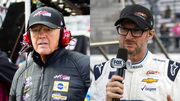
Chase Elliott’s Popularity Hits New Low as Dale Jr.’s Daytona 500 Return Triggers Record-Breaking Sale
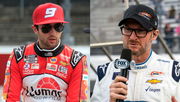
Richard Childress & Johnny Morris Make Patriotic Power Moves Days After Causing NASCAR’s Collapse in Courtroom
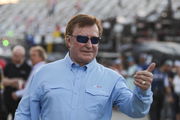
“Shouldn’t Keep His Job”: Dale Earnhardt’s Long-Time Sponsor Demands Steve Phelps’ Ouster After Disgracing Richard Childress
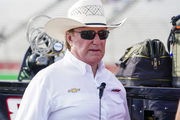
NASCAR Distances Themselves From Commissioner Steve Phelps After Public Embarrassment Claims Insider
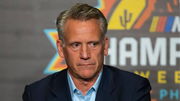
When NASCAR dropped the hammer for intentional wrecking
NASCAR’s decision not to penalize Ross Chastain for his admitted retaliation against Joey Logano in Chicago stands in stark contrast to several high-profile cases where the sanctioning body has taken decisive action for intentional wrecking. The most famous example remains the 2015 Martinsville incident, when Matt Kenseth, already out of championship contention, intentionally wrecked race leader Joey Logano.
ADVERTISEMENT
NASCAR suspended Kenseth for two races, citing the dangerous and premeditated nature of the move. This incident prompted NASCAR to clarify its penalty guidelines for behavioral infractions, including intentional wrecking. Such incidents now carry potential penalties of 25-50 points, a $50,000-$100,000 fine, and a one-race suspension. Kenseth’s actions were deemed especially egregious because he was not racing for position and directly manipulated the outcome of the championship.
Then Denny Hamlin faced similar consequences in 2023. After admitting on his Actions Detrimental podcast that he intentionally wrecked Ross Chastain at Phoenix, NASCAR docked Hamlin 25 points and fined him $50,000. The penalty was issued specifically because Hamlin publicly acknowledged the move was deliberate. This incident underscored that intent (and especially public admission of intent) can trigger disciplinary action.
Other notable cases include William Byron, who was fined $50,000 and docked 25 points for spinning Hamlin under caution at Texas in 2022. Although the points penalty was later rescinded on appeal, the fine was doubled to $100,000. NASCAR subsequently updated its penalty language to ensure both fines and points penalties could be applied for intentional wrecking.
ADVERTISEMENT
In the Xfinity Series, Sammy Smith was docked 50 points and fined $25,000 for a failed intentional wreck at Martinsville in 2024. NASCAR’s own rulebook explicitly lists intentional wrecking as grounds for a significant penalty. Yet, the inconsistency in enforcement, especially compared to the clear precedents set with Kenseth, Hamlin, Byron, and Smith, continues to fuel debate among drivers and fans.
ADVERTISEMENT
ADVERTISEMENT
ADVERTISEMENT

